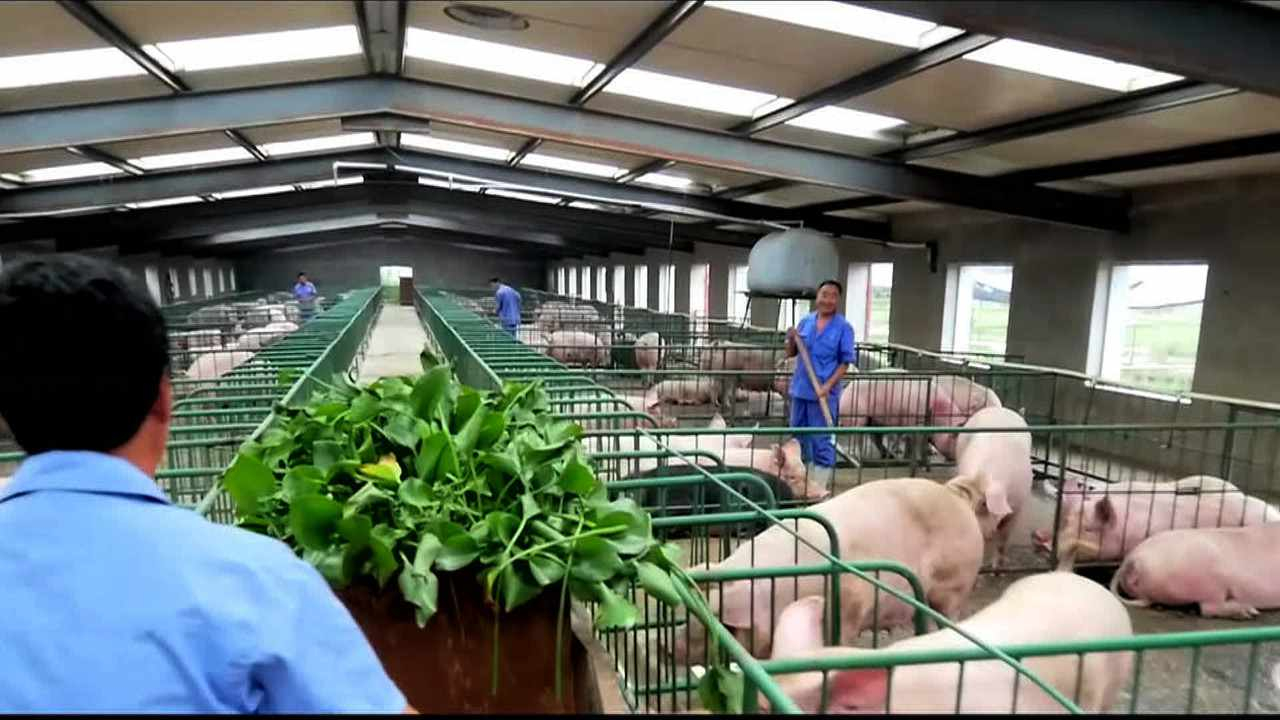02:25

China placed an immediate 25 percent tariff on American farm produce like soybeans. It comes in response to US tariffs on 34 billion US dollars of imports from China early this month.
Soybean oil maker Zhang Yanlong has always been proud of his organic soybean oil. The family-run business in Changtu County, northeast of Liaoning Province, uses only non-GMO soybeans that grow locally.
Zhang told CGTN, now that it is off season for their business, they usually get busy before big holidays when people start doing more shopping. The locals there prefer the non-GMO soybean oil.

The family-run business only uses non-GMO soybeans that grow locally. /CGTN Photo
The family-run business only uses non-GMO soybeans that grow locally. /CGTN Photo

Soybean oil maker, Zhang Yanlong runs his family business in Changtu County, northeast of Liaoning Province. /CGTN Photo
Soybean oil maker, Zhang Yanlong runs his family business in Changtu County, northeast of Liaoning Province. /CGTN Photo
China is the largest buyer of American soybeans worldwide, and most imported soybeans are genetically modified. Which means, a 25 percent increase on US Soybeans will push up prices in the domestic GMO soybean market. That's good news for the non-GMO soybean planters who are only capable of producing roughly 20 percent of the soybean needed nationwide.

More and more Chinese prefer to purchase cooking oil made from non-GMO soybeans. /CGTN Photo
More and more Chinese prefer to purchase cooking oil made from non-GMO soybeans. /CGTN Photo

Beiliang port in the city of Dalian, where the majority of US soybeans arrive in China, and most imported soybeans are genetically modified. /CGTN Photo
Beiliang port in the city of Dalian, where the majority of US soybeans arrive in China, and most imported soybeans are genetically modified. /CGTN Photo
"We didn't see an immediate fluctuation in soybean prices, both GMO and non-GMO ones. I think the changes will happen slowly, because now we still have stockpiles of soybeans, like the ones in my shop, they were from last year's stock," said Zhang.
China was the world’s largest importer of soybeans in 2017. Net imports grew nearly 15 percent year-on-year last year to over 100 million tons, which were mainly used in the production of livestock feed and vegetable oil. Regarding domestic soybean production, farmers have chosen to grow corn over the less-profitable soybeans in recent years.

Soybeans imported into China were mainly used in the production of livestock feed and vegetable oil. /CGTN Photo
Soybeans imported into China were mainly used in the production of livestock feed and vegetable oil. /CGTN Photo

Chinese farmers in the northeastern provinces have chosen to grow corn over the less-profitable soybeans in recent years./CGTN Photo
Chinese farmers in the northeastern provinces have chosen to grow corn over the less-profitable soybeans in recent years./CGTN Photo
As the trade conflict escalated, China fired back with dollar-for-dollar tariffs, mainly on American farm produce like soybean. In the long term, the fluctuation of soybean prices is expected on both sides of the Pacific, from the fields of Illinois and Iowa to remote villages in China's northeast - the country's major soybean planting region.
Wu Dan is the production manager of one large farm which switched one-third of their crop fields into growing soybeans this spring. He said, "We are considering converting more land for growing soybeans next year. If the soybean prices and the subsidies given by the government are attractive, these details will soon be disclosed before the harvest season."
As tariffs have caused uncertainties in many sectors, Chinese soybean farmers are keeping a close eye on any possible market fluctuation. What's certain - when the price of soybeans goes up, farmers are more willing to plant them.








